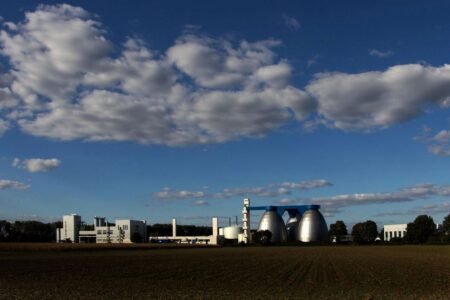(LUXEMBOURG) – Natural population changes, as well as the role played by the pandemic, contributed to a decrease in most EU regions in 2021, according to figures produced Tuesday by the EU’s statistics agency Eurostat.
Eurostat’s report finds that between 1 January 2021 and 1 January 2022, during the COVID-19 pandemic, the EU’s population decreased by 265,257 people. The reduction could be attributed to natural population changes (more deaths than births), as net migration plus adjustment remained positive (more people entered the EU rather than left it). In addition, the pandemic played a role.
In 2021, the EU’s crude rate of natural population change was -2.7 per 1 000 people. At the NUTS 3 level, 980 regions out of 1 164, for which data are available, had a negative rate of natural population change (represented by the gold tones in the map), 173 regions registered a positive rate and 11 regions saw no change (same number of births as deaths), both represented in green-blue tones on the map.
In 2021, every NUTS 3 region of Bulgaria, Estonia, Croatia, Latvia, Lithuania, Hungary, Portugal and Romania registered a negative crude rate of natural population change. In Czechia, Italy, Poland, Slovenia and Slovakia’s cases, almost every region recorded a negative rate with one exception each: the capital region of Hlavní mesto Praha, Bolzano-Bozen, Poznanski and Gdanski, the capital region of Osrednjeslovenska, and the capital region of Bratislavský kraj and Preovský kraj, respectively.
The regions most affected by population loss were all in Bulgaria: Vidin (-25.7 per 1 000 people) and Montana, Kyustendil, Gabrovo, Pernik and Vratsa (all with rates below -20.0 per 1,000 people).
By contrast, every region in Ireland had a positive crude rate of natural population change in 2021, while a relatively high number of regions located in (predominantly northern and eastern) Belgium, France, the Netherlands, (predominantly western) Austria and Sweden also recorded positive rates. This was also the case in Luxembourg and Cyprus (each have only one region).
The highest crude rates of natural population change were recorded in two French outermost regions: Mayotte (32.2 per 1 000 people) and Guyane (23.1 per 1 000 people). These were the only regions, where a double-digit increase in the crude rate was observed.
Thematic section on regions and cities
Database on regional statistics
Thematic section on population and demography








